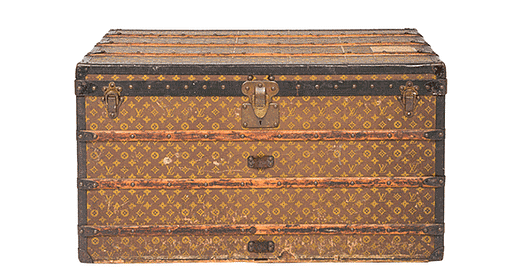Welcome to the Sociology of Business. The Sociology of Business offers a paid membership program. Paid options are for the members of this community who want to be the first to access everything from Web3 brand-building to the new business models and emerging creative formats. Since its inception, the Sociology of Business has been the source code for many other analyses, strategies and brand-building approaches. Members will now have the front-row seat. If you are not yet subscribed, join the community by subscribing below and joining the Sociology of Business Discord. You can find my book, The Business of Aspiration on Amazon and you can find me on Instagram and Twitter. For those new here, in my last analysis, The promise of micro work, I explained why decentralized network of offices is the future.
De-commercialization is an increasingly relevant competitive advantage, brand equity builder, and revenue protector. In the modern economy, everything has become a commodity: art, content, luxury, experiences, heritage, places and people. True brand and business differentiation is in offering the opposite, and building a viable, feasible, and sustainable business model around it. De-comercialization as a business model is based on delivering superior brand value versus just product volume.
De-commercialization playbook revolves around four work streams:
Product de-commercialization
Create collectibles. The role of collectible items within a seasonal collection is to manage brand desirability and create a new revenue stream. They renew the brand aura. Collectibles can span categories, and include ready-to-wear, jewelry, accessories, books, stationary, board games, suitcases and haute couture. All collectibles are limited edition, rare and unique and priced higher than other product categories.They are made in small quantities and their distribution is limited. When featured in the store and on the website, they need to evoke the exclusive feel.
Create digital luxury assets and digital twins. Digital luxury assets are a potential testing ground for new designs and product ideas, which detects demand early and accordingly tailors supply, avoiding overproduction. Digital twins combine physical and digital benefits: for example, a Louis Vuitton jacket has both use value and exchange value thanks to being associated with a digital collectible.
Monetize IP. Archives can become a new revenue stream through direct monetization of a luxury brand’s intellectual property. Archival collections and pieces can be re-issued in the physical and/or in the digital format.
Service
Service de-commercializes products, by creating a product-service system. In addition to services like quick product authentication and proof of ownership, there is RFID and NFC tagging that powers traceability and circularity. Customer- centric services that come with product ownership include membership programs, hyper-personalization, and granular customer segmentation.
Alternative retail options can also be operationalized as exclusive, member-only services. For example, a brand can offer to auction items by its most valuable customers’ and/or celebrity clients’. Who is selling is often more important than what they are selling, and items owned by notable cultural influencers can reach high demand and high prices, especially if the auction is handled by the house itself. By their very format, auctions sell unique items, and are a way to create an additional revenue stream and increase brand halo.
Or, a brand can offer exclusive, invite-only resale services to selected clients. Selected clients can resell their own vintage items, powered by “product passports” (product authentication and proof of ownership data). Resale saves on raw materials, labor, and production costs.
Experience
Products are de-commercialized when their ownership is linked to VIP access to invite-only events, stores, art and hospitality offerings, preferential product access, curation and customization experiences and personalized customer care. Products become passports or experience visas.
Story
Brand history, heritage, provenance and people and personalities associated with it are the sources of value. De-commercialization unlocks this value, through archival items and/or enrichment of the new items with places, cultural activity, and human creativity in order to turn them into an experience and an investment.
Services, experiences and stories associated with product purchase increase customer lifetime value and secure revenue without overproduction and over- inventory. The starting point in the de-commercialization playbook is always “where is the opportunity to create and capture value that does not require an increase in volume?”
The plan is to go beyond isolated initiatives to create a durable value model based on the growing brand ecosystem of products, services, digital and physical experiences, entertainment, membership and partnerships. This ecosystem empowers business growth in an environmentally sustainable and socially responsible manner. It also positions a legacy brand as the leader for luxury as a degrowth-based economic alternative.
Scenario planning
Starting point in scenario planing is to analyze a brand’s current business models, across categories, in order to: a) showcase how they can / will be disrupted by retail innovations like social commerce, fractional ownership, Web3 and secondary marketplaces; and b) how different brand functions can easily and seamlessly incorporate these market disruptions into their business models in the near- and long-term.
The rest of this analysis is for paid subscribers only. Please choose one of the options below to access:
Keep reading with a 7-day free trial
Subscribe to The Sociology of Business to keep reading this post and get 7 days of free access to the full post archives.




